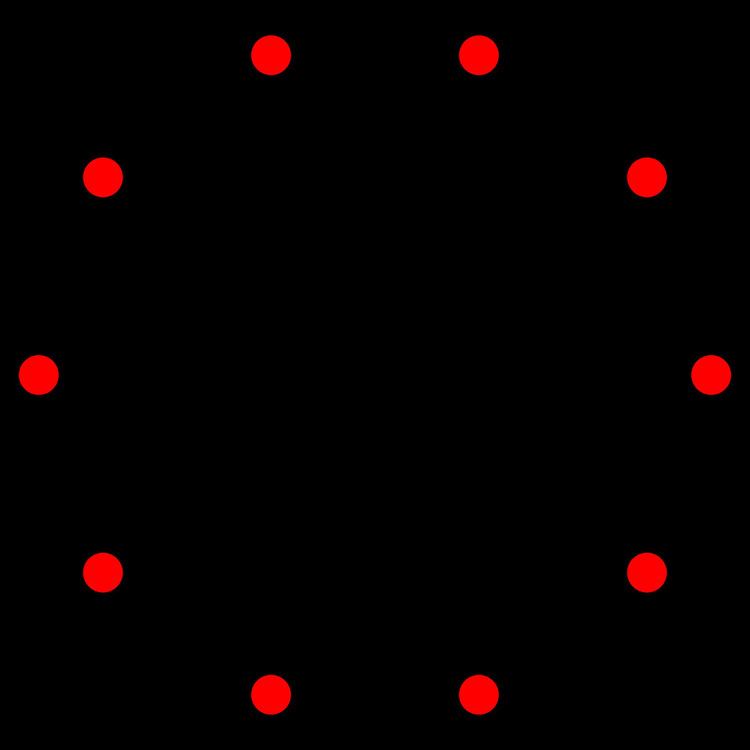 | ||
In five-dimensional geometry, a runcinated 5-orthoplex is a convex uniform 5-polytope with 3rd order truncation (runcination) of the regular 5-orthoplex.
Contents
There are 8 runcinations of the 5-orthoplex with permutations of truncations, and cantellations. Four are more simply constructed relative to the 5-cube.
Alternate names
Coordinates
The vertices of the can be made in 5-space, as permutations and sign combinations of:
(0,1,1,1,2)Alternate names
Coordinates
Cartesian coordinates for the vertices of a runcitruncated 5-orthoplex, centered at the origin, are all 80 vertices are sign (4) and coordinate (20) permutations of
(±3,±2,±1,±1,0)Alternate names
Coordinates
The vertices of the runcicantellated 5-orthoplex can be made in 5-space, as permutations and sign combinations of:
(0,1,2,2,3)Alternate names
Coordinates
The Cartesian coordinates of the vertices of a runcicantitruncated tesseract having an edge length of √2 are given by all permutations of coordinates and sign of:
Snub 5-demicube
The snub 5-demicube defined as an alternation of the omnitruncated 5-demicube is not uniform, but it can be given Coxeter diagram or and symmetry [32,1,1]+ or [4,(3,3,3)+], and constructed from 32 snub 5-cells, 80 alternated 6-6 duoprisms, 40 icosahedral prisms, 10 snub 24-cells, and 960 irregular tetrahedrons filling the gaps at the deleted vertices.
Related polytopes
This polytope is one of 31 uniform 5-polytopes generated from the regular 5-cube or 5-orthoplex.
